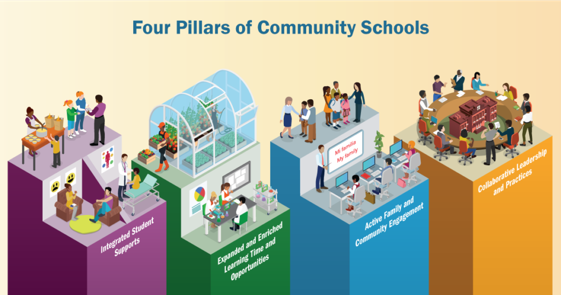Connecting Early Learning with Community Schools and Expanded Learning
Schools that strategically develop a plan for early learners and their families are setting the course for academic success, social-emotional skill-building, and strong family partnerships. Schools are choosing to fulfill this endeavor by integrating their Community Schools, UPK, and Expanded Learning strategies working towards a community-supported, whole-child approach.
When schools serve as focal points for connections to health and social services, families obtain access to critical resources that promote their well-being and ultimately impact academic success. Families in our community struggle to meet basic needs. As highlighted in the 2024 Santa Clara Children’s Data Book: “Students experiencing housing instability nearly doubled in 2023.” Additionally, 36% of families with children under the age of six fell below the necessary household income needed to meet basic family needs and 29% of families were at risk for food insecurity (2024,
Santa Clara County Children’s Data Book). The central goal of a Community School is to empower families with connections to services and programs that promote child well-being and close opportunity and achievement gaps.
For young children, the lack of access to basic needs contributes to chronic absenteeism, healthy child development, and kindergarten readiness. In Santa Clara County, only 37% of children who took part in
2023’s School Readiness Assessment were fully ready for kindergarten. Children who enter school fully ready for the K-12 system “have an 82% chance of mastering basic skills by age 11, compared with a 45% chance for children who are not school ready” (Santa Clara County Outreach Toolkit for School Leaders).
As noted in the image below, a whole-school, whole-child approach integrates Community Schools and Expanded Learning (before and after-school programming). When an integrated strategy starts with early learners, this allows schools to begin to close achievement gaps by meeting the academic, social-emotional, and basic needs of children and families when they are young.


